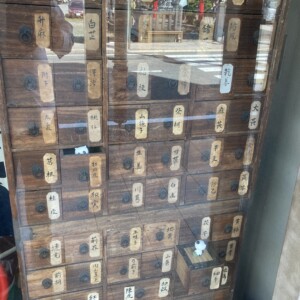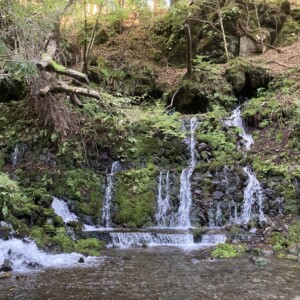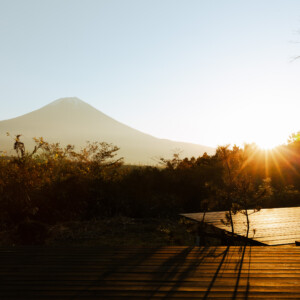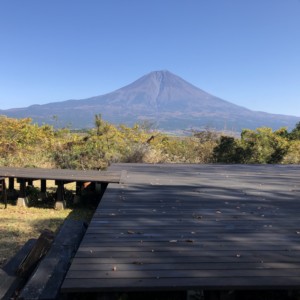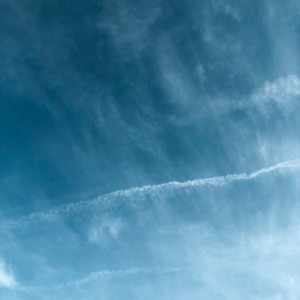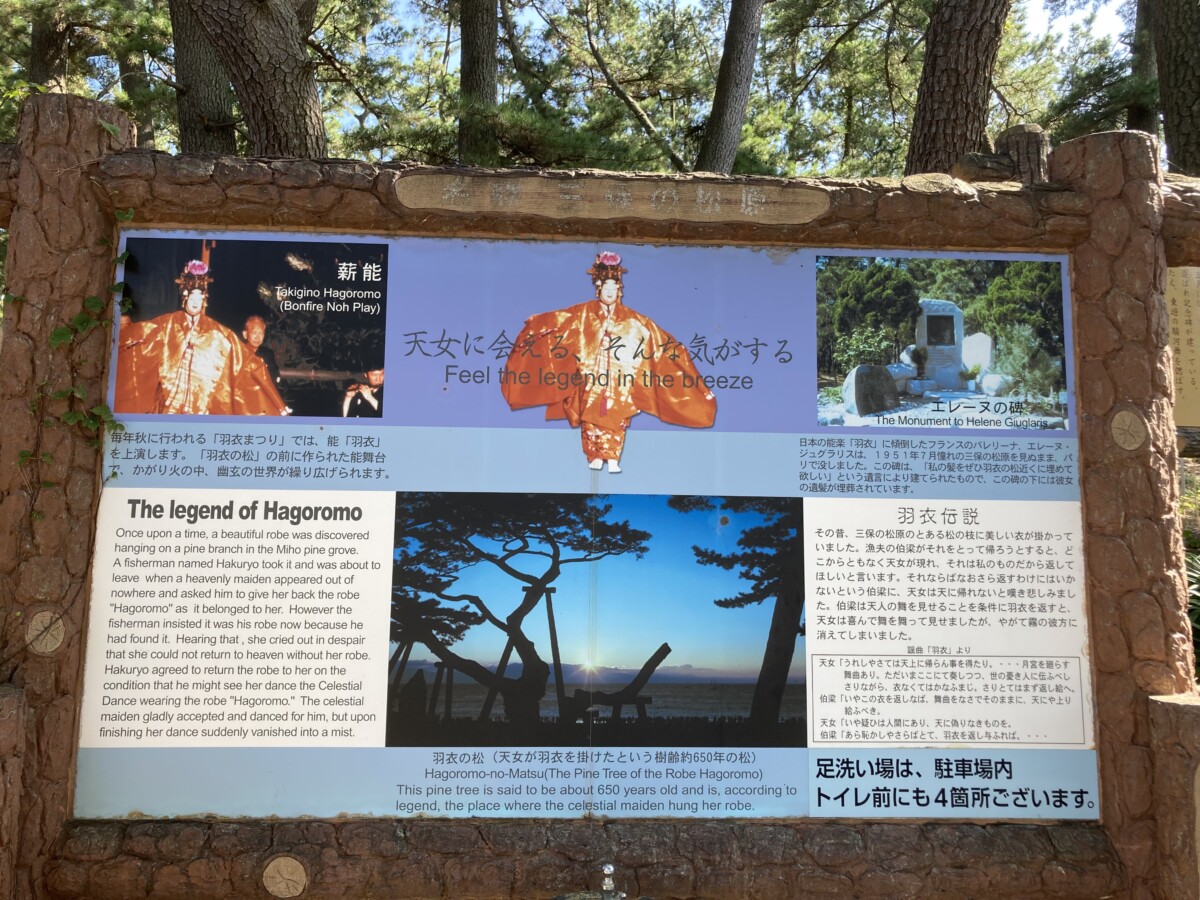
Thorough dissection of the charm of Miho no Matsubara, a World Heritage Site on Mt. Fuji
Miho no Matsubara is a scenic spot where about 30,000 pine trees grow on the coast of about 7 km.
The green of the pine forest, the blue and white waves of Suruga Bay, and the scenery of Mt. Fuji beyond that have fascinated people who travel the Tokaido for a long time.
Miho no Matsubara, in fact, is said to be the most common motif drawn together in the paintings of Mt. Fuji that we see. In 2013, it was registered as a constituent asset of Mt. Fuji World Cultural Heritage.
However, Miho no Matsubara and Mt. Fuji have an open distance of about 45km.
Why was this coast far from Mt. Fuji registered as a constituent asset?
Many people know that Mt. Fuji has a history of being the object of worship of many people in Japan. After the Heian period, when the belief in Mt. Fuji spread to the private sector by trainees, many people began to worship Mt. Fuji, which had been the object of worship until then. The mountain, which was supposed to be worshiped only from the foot of the mountain, has changed to the idea of Shugendo’s sacred mountain.
Even after the Edo period, a large number of religious groups called “Fujiko” were organized mainly in the Kanto region, and Mt. Fuji worship became popular, and mountain climbing as a worship was increasingly established.
The “Mt. Fuji Mandala” made in the latter half of the Muromachi period has been used to promote the belief of Mt. Fuji to the people.
Dainichi, Amida, and Yakushi Buddha are drawn on the top of Mt. Fuji. It is clearly shown here that God lives on the top of Mt. Fuji.
Below that, the shrine of Mt. Fuji Hongu Sengen Taisha is drawn between the clouds over the mountain, and further down, the state of the foot of Mt. Fuji is drawn.
As you can see, many pine trees are drawn here!
From this figure, it was shown that Miho no Matsubara was regarded as the “gateway to Mt. Fuji worship.”
Let me introduce one legend that is handed down to such a beautiful and mysterious Miho no Matsubara.
A long time ago, when a fisherman named Hakuryu was fishing in Miho no Matsubara, a beautiful pine tree was covered with a beautiful feather coat. When Hakuryu tries to bring it home, the shade of the tree says, “Please give it back.” There was a beautiful celestial maiden.
However, Hakuryu, who turned out to be a heavenly swan maiden, does not want to hand it over. Say “let’s make it a heirloom” and try to bring it home.
The celestial maiden, who could not return to heaven without Hagoromo, began to cry when she heard it.
The pitiful White Dragon says: “Then, please show me the heavenly dance here. If you can show me a wonderful dance, I will return this garment.”
When the celestial maiden hears it, she complains, “You can’t dance without Hagoromo. Please return Hagoromo first.”
Hakuryu suddenly becomes worried there. Perhaps the celestial maiden will return to heaven as soon as she receives the hagoromo. I may not be able to see the dance.
The celestial maiden replies to such a white dragon, “Doubt and lies are in the human world. There is no heavenly world.”
Impressed by the words, Hakuryu returns Hagoromo to the celestial maiden.
Then, the celestial maiden returned to Takane in Fuji, into the haze, and into the sky, performing a beautiful dance that Hakuryu had never seen before.
This is the “Hagoromo Densetsu” that is handed down to Miho no Matsubara.
This story will be widely known throughout Japan due to the Noh performance “Hagoromo” created by Zeami based on the legend of Miho no Matsubara’s Hagoromo during the Muromachi period.
There are Hagoromo legends all over the country and in Asia, but they are said to be based on the story of Miho no Matsubara.
Why did this legend have to be set in Miho no Matsubara?
That’s because Mt. Fuji is the closest mountain to heaven in Japan. And, as mentioned earlier, the awe that God lives in is in the subconscious of the people.
After passing through the forest of Mt. Fuji and entering the 5th station, Mt. Fuji will change its appearance. As you enter the so-called “tree line”, the trees and things that make you feel life disappear, and instead the haze that surrounds you becomes stronger and stronger. People in the old days may have strengthened their faith in Mt. Fuji to the mysterious feeling of entering the Pure Land.
In “Hagoromo Densetsu,” the celestial maiden gave Hakuryu a kind of teaching that “doubt and deception are useless.” Perhaps the way she returned to heaven had to be this sacred Mt. Fuji.
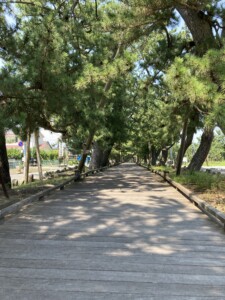
And Ipponmatsu, who is said to have been wearing a hagoromo, which appeared in this story, also exists in Miho no Matsubara.
The shintai of Miho Shrine in Miho no Matsubara is this Hagoromo pine tree.
The approach leading to Miho Shrine is called “Kami no Michi” and is a line of thick and splendid pine trees that are 200 to 400 years old.
The gods who descended from heaven go to Miho Shrine through this road.
The entire area around here is considered to be a sanctuary.
At the “Hagoromo Festival” held in October, a stage will be set up in the pine forest and “Hagoromo” will be danced.
The reason why Mt. Fuji in Japan was selected as a World Cultural Heritage Site.
It was an object of worship and a great inspiration for art.
Miho no Matsubara, who is deeply involved in the worship of Mt. Fuji and is said to be the place where the god descended from Mt. Fuji, also has a strong presence in its history.


